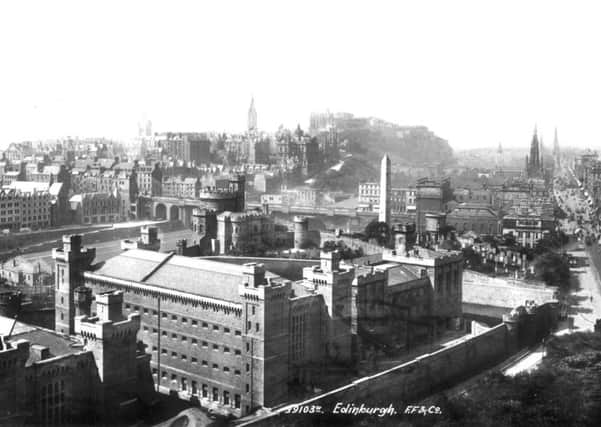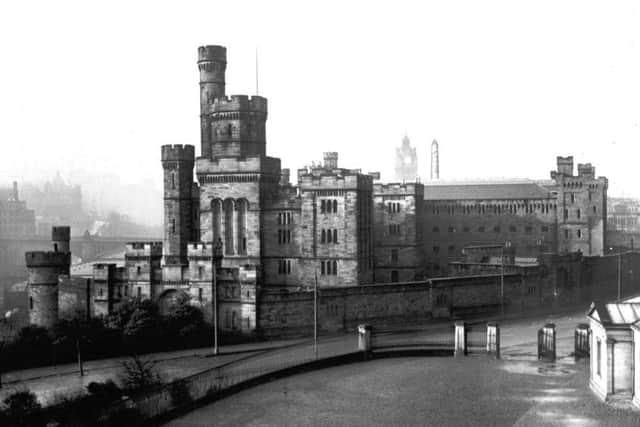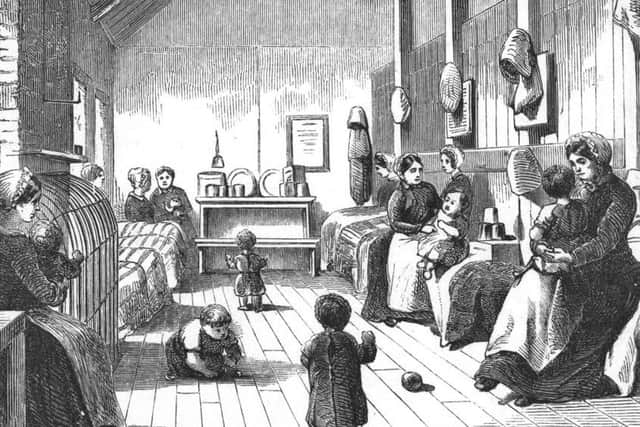Book tells forgotten hell of Edinburgh's Calton Jail


Now a book by Scottish historian Malcolm Fife tells the forgotten story of some of the female prisoners who made up the majority of the population of the infamous jail in the mid 19th century.
Currently in Scotland, women make up less than 5 per cent of prisoners. But at one point in the mid-19th century females outnumbered the men, often surviving in the dingy cells with their infant children.
Advertisement
Hide AdAdvertisement
Hide AdCalton Jail was opened in 1817, a short distance from the city’s Princes Street. Due to its opulent design, the prison was often mistaken for Edinburgh Castle by 19th century visitors.


But the then largest jail in Scotland soon became the city’s main correction facility for prisoners of all types and the setting for inhumane executions of both men and women, which often attracted huge crowds outside.
During the 19th century in Edinburgh anyone detained and charged with a crime had to choose between paying a small bond or being locked up, and as most women couldn’t afford to pay, they often ended up behind bars.
“The proportion of females at Calton Jail at that time was exceptional compared to the rest of Scotland,” Malcolm Fife, author of The Story of Calton Jail, explained.
“Most of the women were charged for petty reasons. There was a serious drink problem in Edinburgh at that time, far worse than today in Scotland, and between 70 to 80 per cent of the crimes were committed because of drink.”


Almost all the females at Calton Jail were imprisoned for minor offences – including in the late 1860s when an average of 12,500 females per year were charged with being “drunk and incapable”.
Women were also charged with running unlicensed premises known as “shebeens”, illicit pubs where alcohol was sold without a licence.
Prostitution and petty crime were rife in the city, with more unusual crimes including “concealing a pregnancy” and “impersonating a man”.
Advertisement
Hide AdAdvertisement
Hide AdRecords for Calton Prison between October 1845 to 1846 list the professions of the inmates. The most common for females were prostitutes, numbering 573, then labourers, caterers and miners with 529, followed by housewives at 417.


In one case in 1805, a Janet Dunbar was sentenced to 60 days’ imprisonment for “keeping a disorderly house, riotous conduct and disturbing her neighbours”.
Also that year, another woman was sentenced to 60 days in jail for keeping a house “at the foot of Blackfriars Wynd” which was “frequented by boys and girls and women of the most abandoned character”.
“There are various theories why women outnumbered the men,” Fife said. “One being that many other big towns in Scotland had mills where women could seek employment, but Edinburgh did have a very large population of employed servants.
“I think the more likely theory is that a large number of the women either refused to pay, or did not have the money to pay, the small fine that would have stopped them from having to stay in prison while awaiting trial.”


As well as being imprisoned themselves, many women had to endure the jail conditions with infant children. “Very young children, up to the age of three or four,” Fife added.
The jail was closed down in 1926 to be replaced by Saughton Prison.
The Story of Calton Jail: Edinburgh’s Victorian Prison, by Malcolm Fife, is available to buy, published by The History Press